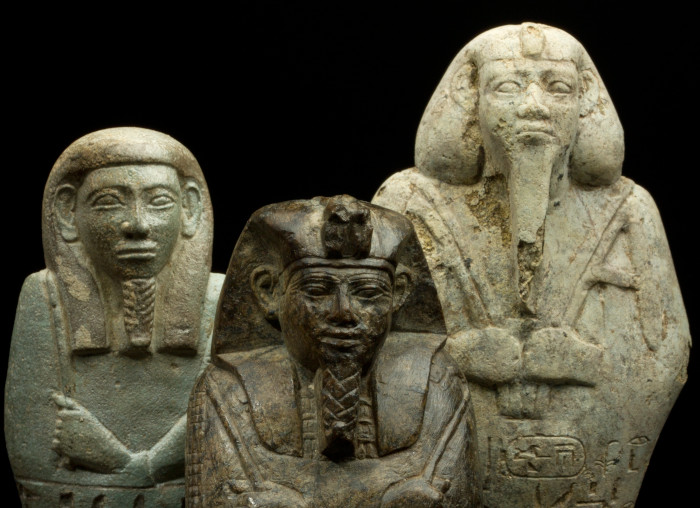Exhibitions
Departments
Settled gatherer communities in the Nile Valley
About 9 000 BC (at the end of the Pleistocene era and in the early Holocene) profound climate changes were taking place, bringing relative warming and increased precipitation. As a result, the area of Central Sudan became part of the Sub-Saharan savannah zone. Vast expanses of previously hostile region became available for colonisation advancing both from the south and the north, as well as from distant desert oases.
Communities of that time, referred to as the Early Khartoum culture in Sudan or the Khartoum Variant in Lower Nubia, had lived a semi-sedentary life since 8000 BC, in the Nile valley and in the adjacent lands, relying on gathering and hunting for their subsistence. Living on the banks of the Nile, they intensively exploited the nearby environment (fishing, gathering river molluscs). Small settlements (permenant and seasonal) were being located on the hilltops in the Nile valley, and they incorporated cemetries. At the sites of the Early Khartoum culture, such as Saqqai near the 6th Cataract or Khartoum-Hospital, fragments of the oldest pottery vessels were found, which had appeared there even earlier than in Egypt. The motif used for decoration of this pottery - wavy dotted lines - will later become characteristic for the whole south Saharan zone from Mauritania to Kanya.
The semi-settled societies from the Nile valley of the Early Khartoum culture differed from hunter-gatherer groups known from Europe; rather they were precursors of future farming communities.
Nasza strona internetowa używa plików cookies (tzw. ciasteczka) w celach statystycznych, reklamowych oraz funkcjonalnych. Dzięki nim możemy indywidualnie dostosować stronę do twoich potrzeb. Każdy może zaakceptować pliki cookies albo ma możliwość wyłączenia ich w przeglądarce, dzięki czemu nie będą zbierane żadne informacje. Dowiedz się więcej jak je wyłączyć. OK, Rozumiem


